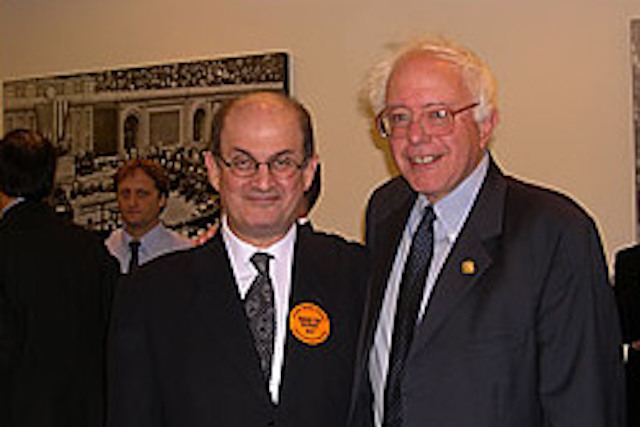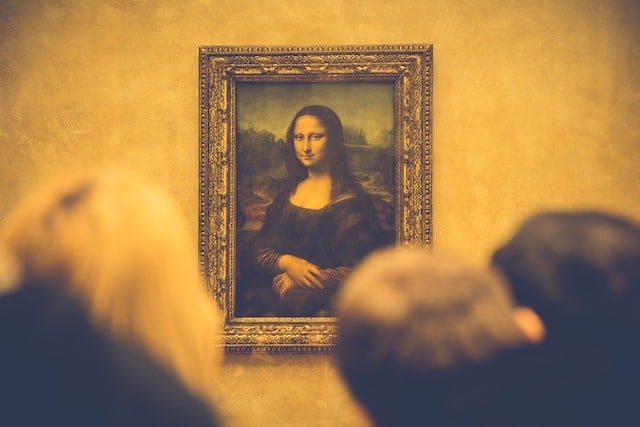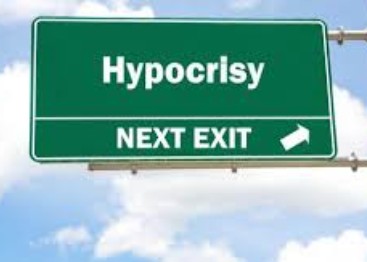Notorious Publishing Scandals: 10 Controversies That Made Headlines
Ever Wondered About the Wild Stories Behind the Books You Read?
We’ve all been there—you finish a book, close it, and move on, maybe mentioning it in passing later. But what if I told you some books come with scandals, lies, or uproars that make their backstories even more gripping than the plots themselves?
Take, for example, books that sparked outrage because they were packed with fabricated “facts,” or those that caused such a firestorm that people protested in the streets. The publishing world isn’t just about quiet libraries and polished bestsellers—it’s got drama, deception, and moments that made history.
Ever picked up a memoir only to later discover half of it was made up? Or heard about a novel so controversial it got banned in multiple countries? These aren’t just footnotes in literary history—they’re wild, real-life twists that prove truth can be stranger than fiction.
Next time when you flip through a book, take a second to dig into its past. You might uncover a scandal, a hoax, or a rebellion hiding between the lines. And honestly, isn’t that way more fun than just reading and forgetting?
10.The Shocking Scandal Behind A Million Little Pieces – A Memoir That Wasn’t
When James Frey’s A Million Little Pieces landed in bookstores in 2003, readers thought they were getting a raw, unfiltered memoir about addiction and recovery. And for a while, it seemed like the ultimate redemption story—gritty, painful, and inspiring. Oprah Winfrey even picked it for her book club, sending sales skyrocketing and cementing its place as a bestseller.
But then, everything unraveled.
A website called The Smoking Gun dug into Frey’s claims and dropped a bombshell: much of the book was exaggerated or outright fabricated. The dramatic arrests, the harrowing rehab stories, even key personal tragedies—turns out, a lot of it was fiction dressed up as fact.
The backlash was brutal. Publishers scrambled to respond, readers felt betrayed, and critics like Anthony Bourdain tore into Frey, calling the book “morally repugnant.” Imagine buying what you thought was a true story, only to learn the author had spun a wild, exaggerated tale—all while claiming it really happened.
What’s wild is that the scandal didn’t kill the book. If anything, it made Frey more infamous. Some argued it didn’t matter if the facts were shaky—the emotions felt real. Others saw it as a betrayal, especially those who connected deeply with his supposed journey.
9.When a Novel Sparked Death Threats: The Explosive Controversy of The Satanic Verses

When Salman Rushdie published The Satanic Verses in 1988, he probably didn’t expect it would force him into hiding for years. The book—a magical realism tale blending history, myth, and fiction—follows two Indian immigrants in a surreal, dreamlike journey. But what really set the world on fire was its portrayal of Islamic prophet Muhammad, which many Muslims saw as deeply blasphemous.
The outrage wasn’t just angry reviews. Iran’s Ayatollah Khomeini issued a fatwa—a religious decree calling for Rushdie’s assassination. Overnight, the author became a target, living under police protection, moving constantly, and fearing for his life. Bookstores were firebombed, translators were attacked, and several countries banned the novel entirely.
What made it so controversial? Beyond its unconventional depiction of Muhammad, the book referenced the Satanic Verses—a disputed historical episode involving pagan goddesses. To critics, it wasn’t just fiction—it was an insult. Yet defenders argued it was a thought-provoking exploration of faith, identity, and cultural clash.
The fallout was surreal: a book shaping global politics, sparking violent protests, and turning its author into both a literary icon and a wanted man. Decades later, the scars remain. Rushdie survived an assassination attempt in 2022, proving this wasn’t just a ’90s scandal—it was a life-altering battle over art, religion, and free speech.
Love it or hate it, The Satanic Verses remains one of history’s most dangerous books—proof that words, when powerful enough, can shake the world.
8.J.D. Salinger’s Unauthorized Sequel
Whether you love it or find it insufferable, there is no denying the impact of J.D. Salinger’s famous novel The Catcher in the Rye. While the book itself has generated its own streak of controversy over the years, that’s not what we’ll be recapping here. Instead, we’ll spotlight John David California AKA Fredrik Colting, a book author who opted to pen his own sequel to The Catcher in the Rye.
60 Years Later: Coming Through the Rye, published in 2009, follows an elderly Holden Caulfield and his adventure following an escape from a retirement home. However, it wasn’t too long before Colting’s fanfiction began stirring up trouble with Salinger himself who, before he died in 2010, saw fit to slap him with a lawsuit. Sallinger argued, not unreasonably, that Colting’s book thoroughly infringed on his already existing work and was heavily exploitative regarding Holden Caulfield’s character.
After the dispute went to court, a permanent injunction was granted by the U.S. District Court for the Southern District of New York. This injunction prevented the book from seeing official publication in the United States, though Colting did file an appeal to the Second Circuit Court of Appeals later on.
7.When a Comic Book About the Holocaust Got Banned – The Shocking Story of Maus
You wouldn’t expect a graphic novel about mice and cats to become one of the most banned books in America. But Art Spiegelman’s Maus – which depicts Jews as mice and Nazis as cats – proved that even cartoon animals can’t escape controversy when telling difficult truths about the Holocaust.
Published between 1980-1991, this Pulitzer Prize-winning work follows Spiegelman’s father’s horrific experiences in concentration camps. The animal allegory makes the unbearable slightly more bearable, yet the story never softens the brutality – showing hangings, mass graves, and raw survivor trauma with unflinching honesty.
That’s exactly what got it banned. Schools in Tennessee and elsewhere objected to its nudity, strong language, and violent imagery. Critics argued the mouse metaphor actually reinforced negative stereotypes about Jews. But here’s the irony: these bans made Maus more famous, driving curious readers to discover this groundbreaking work.
The controversy raises tough questions: How should we teach horrific history? Does shielding students help or hinder understanding? Maus proves that even in cartoon form, the Holocaust’s truths remain powerful – and to some, dangerous.
Decades later, this anthropomorphic masterpiece remains both celebrated and challenged, proving that great art doesn’t just entertain – it provokes, educates, and sometimes, gets banned for doing its job too well.
6.When Good Intentions Backfire: The American Dirt Controversy That Divided Readers
In 2020, Jeanine Cummins’ American Dirt – a thriller about a Mexican mother fleeing cartel violence – was supposed to be the next big literary sensation. Instead, it became one of publishing’s biggest culture war battlegrounds.
The book’s premise was undeniably gripping: a desperate journey to the US border, packed with danger and maternal sacrifice. Early reviews praised its page-turning intensity. But then the backlash hit – hard. Critics slammed Cummins, a writer who’d previously identified as white, for profiting from a story that wasn’t hers to tell.
The complaints were specific: stereotypical characters, inaccurate details about Mexican life, and a narrative that felt like trauma tourism. When Oprah selected it for her book club, the controversy exploded. Suddenly, everyone was debating who gets to tell which stories – and what happens when they get it wrong.
What made this different from typical literary criticism? The raw nerve it touched about cultural appropriation in publishing. Latino writers pointed out how they’d struggled for years to tell similar stories, only to see a less-qualified author get a seven-figure advance and prime marketing.
The irony? All this drama made American Dirt a bestseller anyway. But it also sparked crucial conversations about authenticity, privilege, and who benefits from marginalized stories. Years later, the debate still lingers – proof that in today’s world, how a story gets told matters just as much as the story itself.
5.Amazon vs. Hachette Book Group

Nowadays, whether it’s a book, a new air fryer, or a six-pack of towels, if you need it at your doorstep quickly, you’re heading to Amazon.com for it. Alongside their convenient online shopping and streaming content, Amazon also has a wide array of electronic books AKA e-books for sale as well. The publishing controversy we’ll be spotlighting here is focused not just on Amazon but on Hachette Book Group, one of the largest book publishers in the industry.
Back in 2014, Amazon, looking to lower the prices of their e-books, put pressure on Hachette to comply by delaying shipments of their physical books. They also decided to remove the pre-order option, usually present on a forthcoming book’s listing, from any new Hachette title on the site. The more this dispute went on, the more attention it received, with Amazon receiving criticism for its bullying tactics which were nothing short of harmful.
Many authors, whose work was published by Hachette, found themselves stuck right in the middle of this conflict, with the reach of their work being severely affected by it. Eventually, both parties came to a compromise via a multi-year agreement, though the specific details have never been revealed publicly.
4.The Da Vinci Code Drama: When a Bestseller Sparked a Lawsuit

Dan Brown’s The Da Vinci Code wasn’t just a novel—it was a global phenomenon. Selling over 80 million copies, this gripping tale of secret symbols, religious conspiracies, and a murder in the Louvre Museum had readers hooked. But behind the blockbuster success lay a fiery controversy that landed in court.
The trouble started when critics noticed striking similarities between Brown’s 2003 thriller and Holy Blood, Holy Grail, a 1982 book exploring the same explosive theory: that Jesus and Mary Magdalene had descendants living today. The authors, Michael Baigent and Richard Leigh, were furious. They sued Brown for copyright infringement, claiming he’d stolen their core ideas, plot points, and even character names without credit.
In court, Brown admitted he’d drawn inspiration from their work—but argued that historical theories can’t be “owned.” The judge agreed, ruling that facts and ideas aren’t protected by copyright. The verdict was a win for Brown, but the debate raged on: How much borrowing is fair in fiction? When does inspiration cross into theft?
The irony? The lawsuit only fueled more buzz for The Da Vinci Code. Critics called it a ripoff; fans devoured it as a thrilling page-turner. Years later, the drama remains a landmark case in publishing—proof that even wild success can come with wild controversy. After all, nothing sells like a good mystery… especially when it’s about a mystery.
3.The Explosive Controversy of The Bell Curve – When Science Clashed With Society
When The Bell Curve hit shelves in 1994, it didn’t just present research – it dropped a cultural bomb. Authors Herrnstein and Murray made two explosive claims: that IQ tests could predict life success, and that racial differences in test scores might be genetic. Cue the firestorm.
Critics erupted, calling the book racist pseudoscience dressed in academic jargon. The suggestion that social inequalities were biologically predetermined struck many as not just flawed, but dangerous. Scholars quickly dismantled its logic – after all, we know intelligence is complex, and high IQ doesn’t guarantee wealth or happiness.
But the real alarm? The book’s potential consequences. Its arguments could have justified slashing social programs and excusing discrimination. The backlash grew so fierce that universities faced pressure to cancel the authors’ speaking engagements.
What makes The Bell Curve still relevant today isn’t its science (widely discredited) but its cautionary tale: how controversial ideas, even poorly supported ones, can influence policy debates and public perception. Three decades later, it remains a lightning rod – proof that when books claim to explain human potential, the stakes are always higher than ink on paper.
The irony? While the authors claimed IQ determined destiny, it was their flawed arguments that truly predicted the book’s fate: not as science, but as a cultural flashpoint we’re still unpacking today.
2.How J.K. Rowling Went From Beloved Author to Controversial Figure

For millions who grew up with Harry Potter, J.K. Rowling was more than an author—she was a cultural icon. But in recent years, her public image has undergone a dramatic transformation, leaving many fans heartbroken.
The controversy began in 2019 when Rowling tweeted support for a researcher fired for stating that biological sex is immutable. LGBTQ+ advocates quickly accused her of transphobia, arguing her comments dismissed transgender identities. The situation escalated in 2020 when Rowling published a lengthy essay doubling down on her views. She expressed concerns about transgender rights impacting women’s spaces, like bathrooms, even suggesting potential safety risks—a claim that sparked outrage.
The backlash was swift and severe. LGBTQ+ fans, who had found solace in her magical world, felt betrayed. Fellow authors distanced themselves, and some readers vowed to boycott her work. Yet Rowling remained defiant, stating she didn’t care about her legacy being affected.
What makes this saga so striking is the stark divide it revealed. For some, Rowling is standing up for women’s rights; for others, she’s promoting harmful stereotypes. Either way, the woman who once united readers now finds herself at the center of a heated debate—proving that even the most beloved storytellers can become lightning rods for controversy.
The bitter irony? The series that preached “love conquers all” now sits uncomfortably alongside its author’s polarizing stance. For many fans, the magic just hasn’t been the same since.
1.The Shocking Twist That Changed To Kill a Mockingbird Forever
For over half a century, To Kill a Mockingbird stood as a literary monument to racial justice, with Atticus Finch as its noble hero. Then came Go Set a Watchman in 2015 – and suddenly, America’s favorite fictional lawyer wasn’t who we thought he was.
The original 1960 classic gave us Atticus the crusader, the white lawyer who bravely defends a Black man in the racist South. But the “sequel” (actually Lee’s first draft) revealed a shocking alternate version: Atticus the segregationist, attending Klan meetings and resisting civil rights progress.
Fans felt betrayed. How could the same character embody both moral courage and racial prejudice? The controversy deepened when questions arose about Harper Lee’s consent to publish. At 89, nearly blind and deaf, had the reclusive author truly reversed her lifelong refusal to release this manuscript? Her lawyer’s suspicious timing – just after the death of Lee’s protective sister – fueled theories of exploitation.
The real tragedy? This publishing drama overshadowed the book’s actual value as a raw first draft showing Lee’s creative process. Instead of celebrating literary evolution, we got a cultural identity crisis – proof that even beloved classics can’t escape uncomfortable truths about their origins.
In the end, Watchman didn’t just challenge Atticus’s legacy. It forced readers to confront an unsettling question: Do we want our heroes flawed and human, or frozen in perfect idealism? The answer, much like Lee’s complicated masterpiece, remains beautifully, painfully unresolved.
























